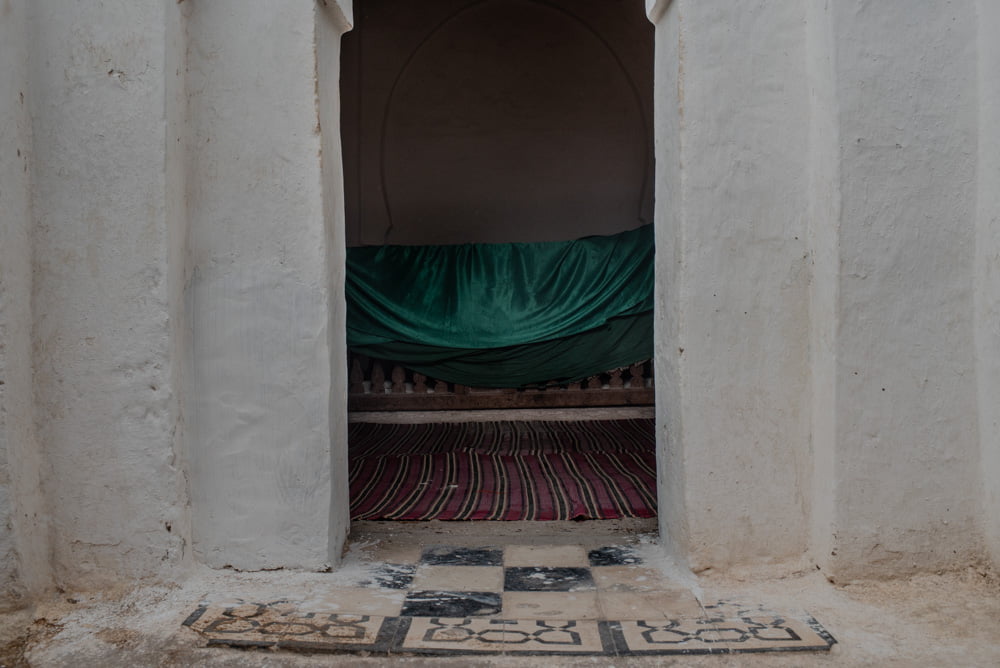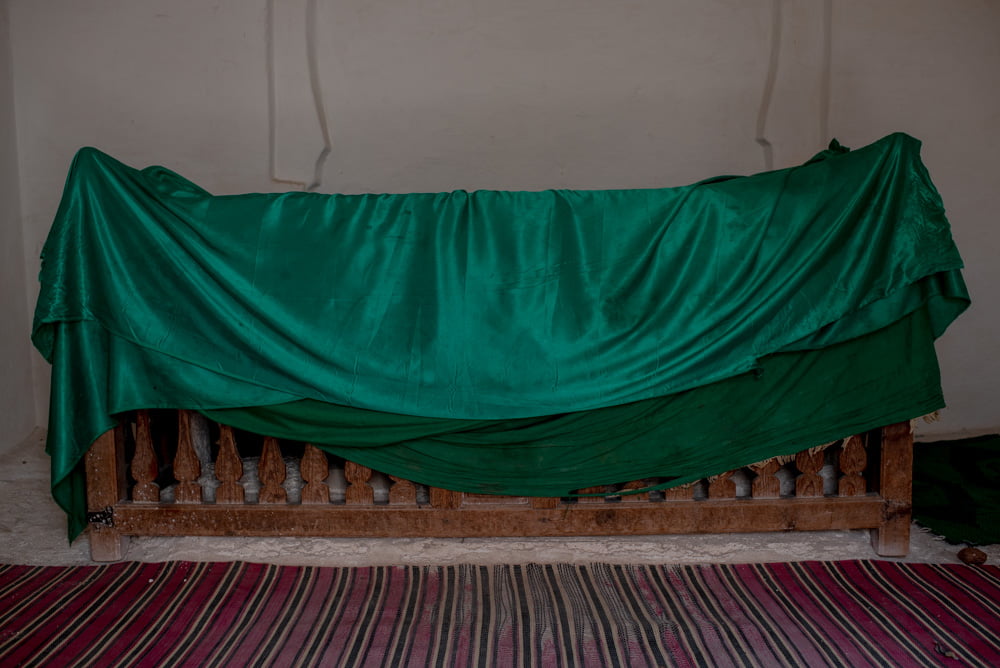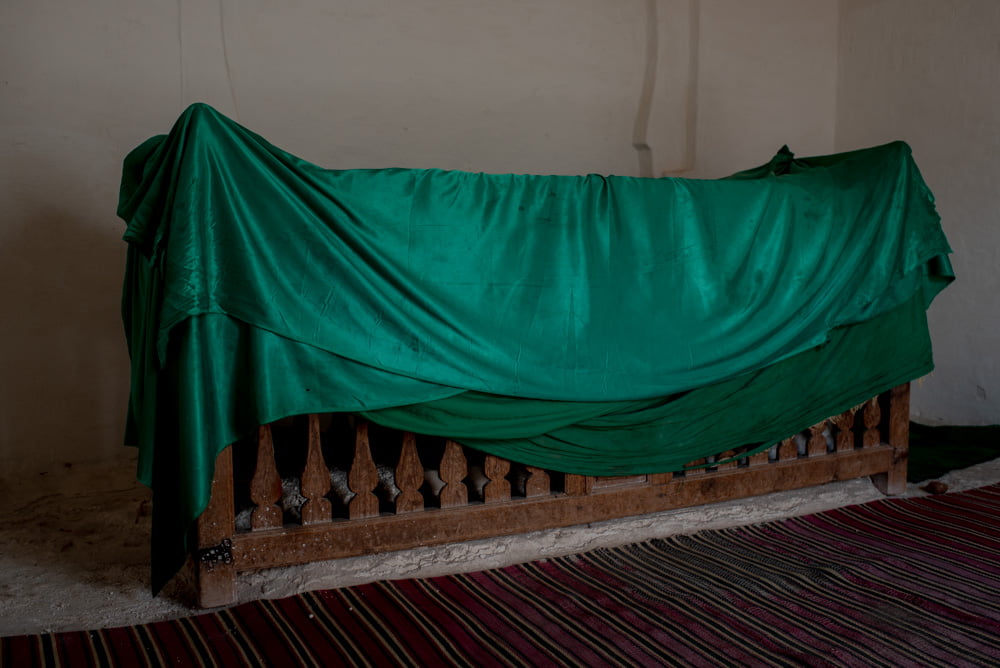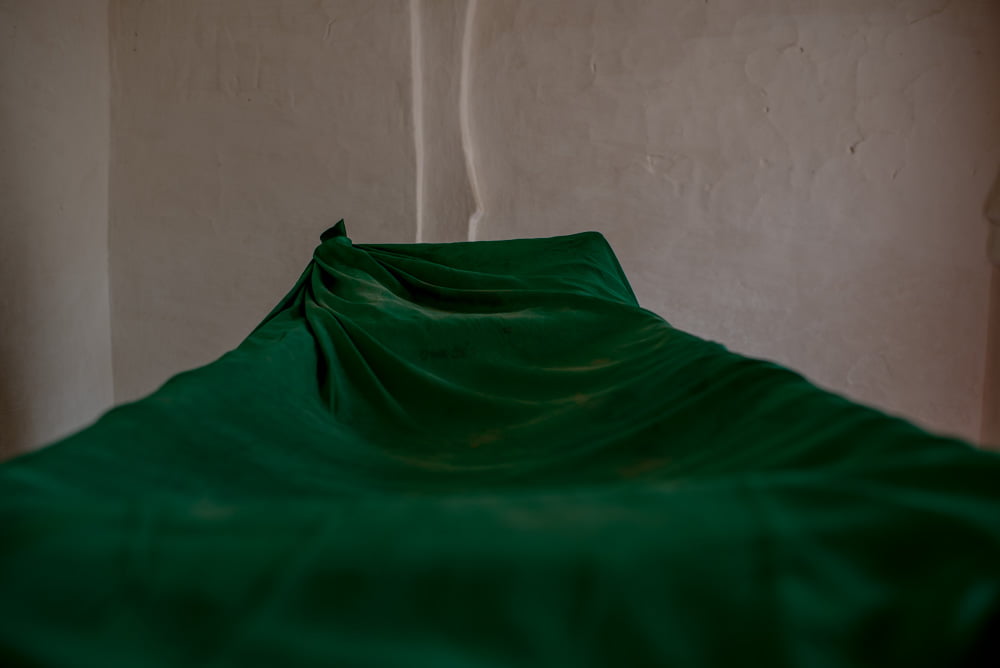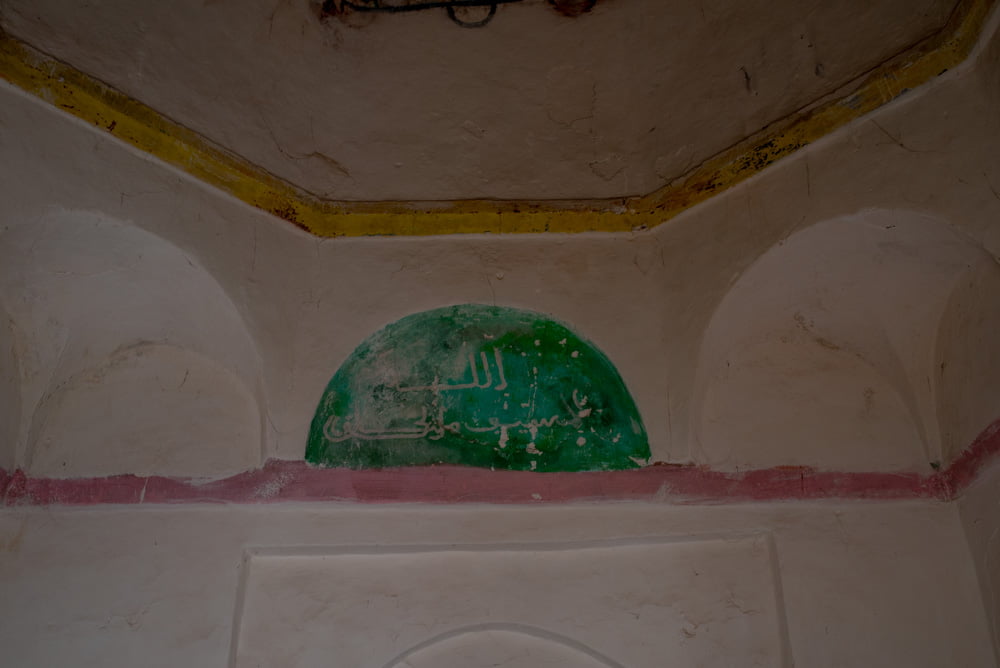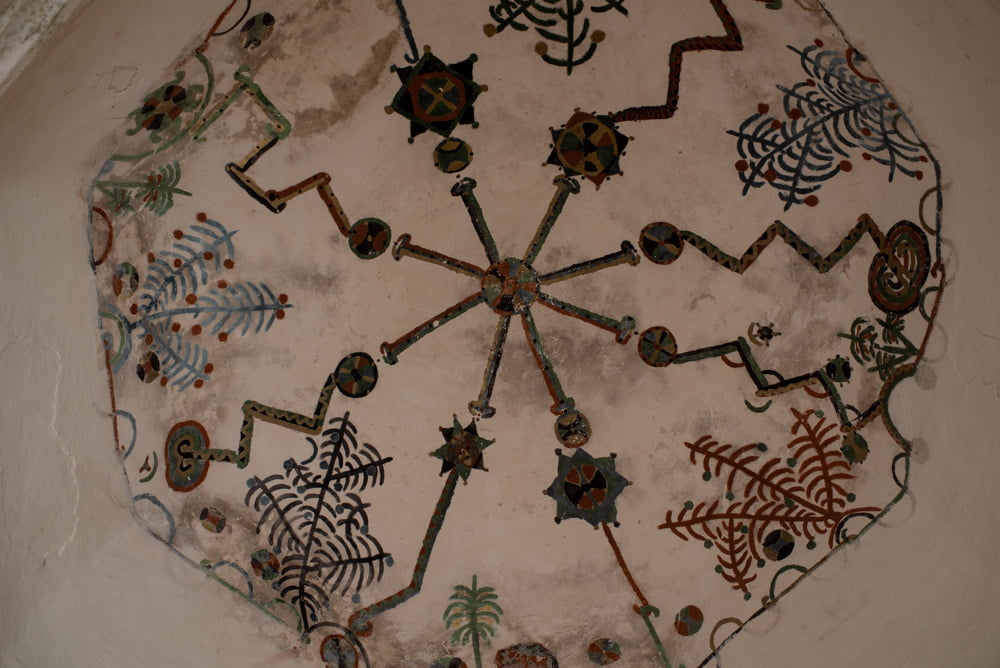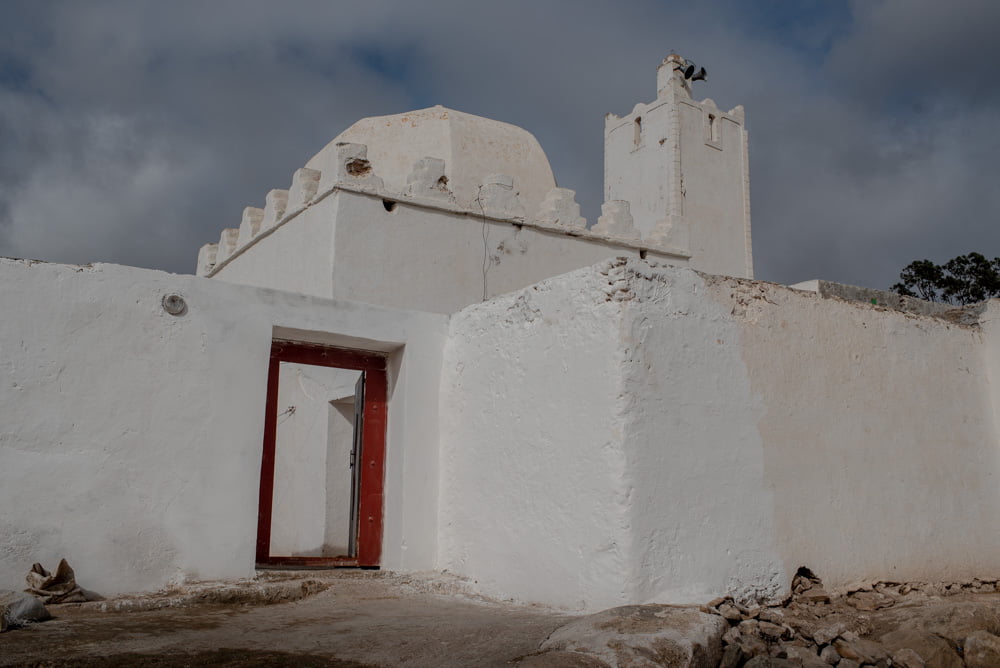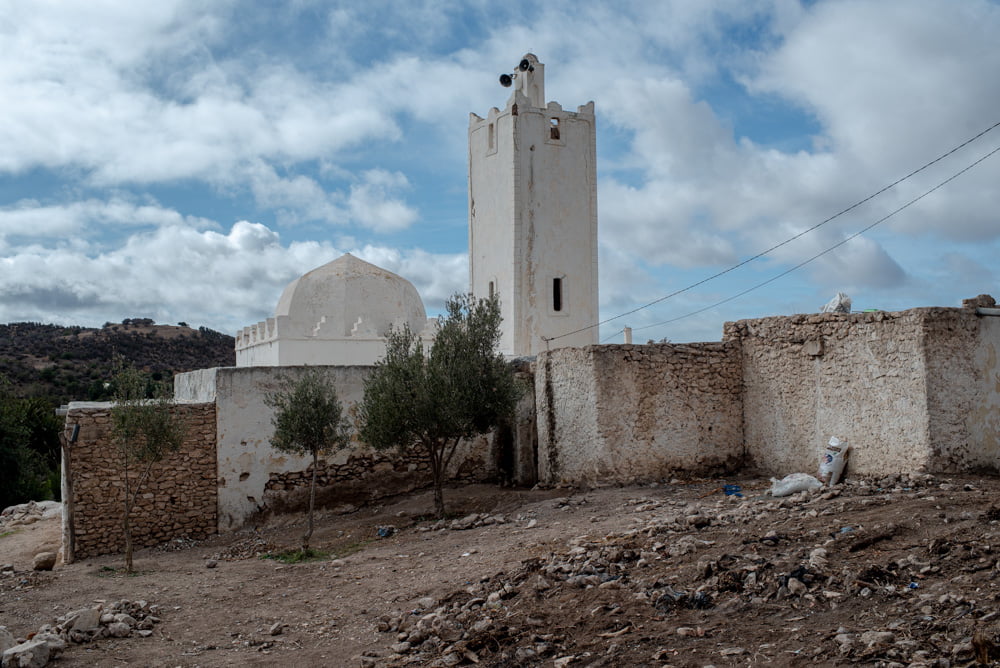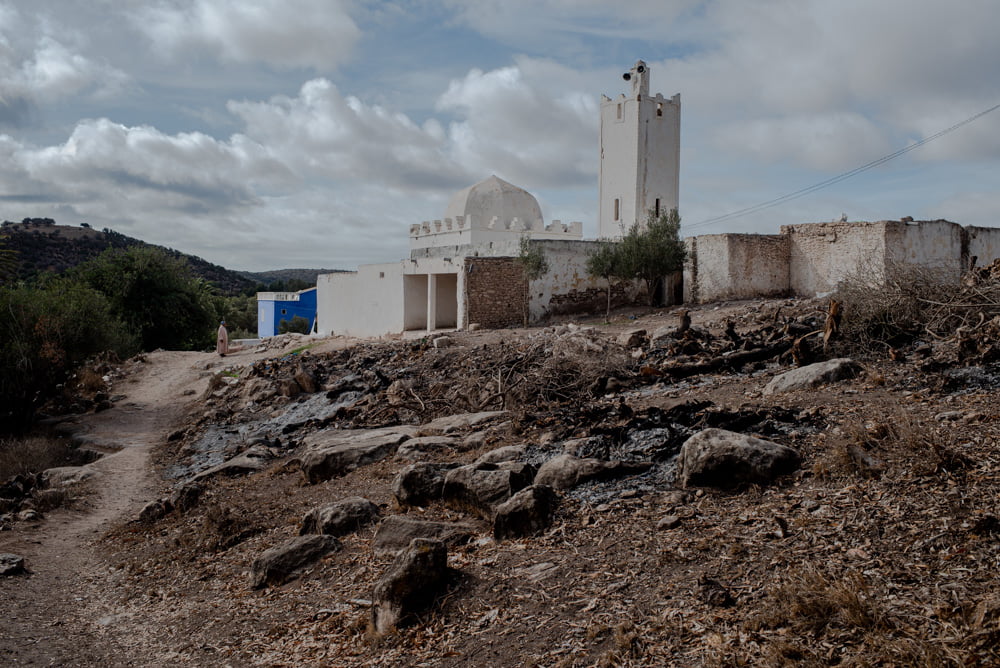I Am He Whom I Love
I am He whom I love, and He whom I love is I:
We are two spirits dwelling in one body.
If thou seest me, thou seest Him,
And if thou seest Him, thou seest us both.Hussein Ibn Mansur Al Hallaj
On the bus recently from Casablanca I was fortunate to sit next to a teacher of English from Safi, a Portuguese coastal city in between Casablanca and Essaouira. Of the diverse topics we discussed, perhaps the most interesting was the subject of the current dichotomy in Moroccan society regarding the relevance of traditional superstitious beliefs in comparison with the irresistible march of science and rationality.
Chama was definitely of the belief that the old traditions have had their day, and that Morocco must continue its progress towards modernity. I think she considered my interest in Jinn possession and the Sufi co-fraternities ( Gnaoua, Hamadcha and Aissouia ) practicing different forms of healing in sacred religious/magical ways with incredulity.
Morocco was for the modern, with a linear curve heading directly towards an erudite, cosmopolitan and definitely 21st century society. The traditions were for yesterday.
One area we shared some agreement over was in the beauty of Sufi poetry. It seemed clear she mostly discounted the traditional Sufi role of baraka ( blessings and possibly healing received directly from Allah through the body of a saint ) and the importance of the lineage, hagiography and tariqah of the Saints. As an academic of language, Chama’s appreciation of Sufi poetry, and its rich association with other cultures especially Andalucia, was glowing.
She agreed to send me some poems from the great Sufi writers, now enjoying a renaissance in the form of modern songs. From my subsequent reading, I glean that many of the original Sufi poets appear somewhat radical for their time, advocating a peaceful and loving message which was revolutionary. A significant number were executed by traditional Islamic leaders for those prescient views. It is perhaps helpful to reflect that the nature of Sufi poetry is often rich and sensual, and invariably of the love and indivisibility between the writer and their god, compositions which can easily be applied to the love between people.
It is, perhaps, no co-incidence that the present King Mohamed VI in Morocco is encouraging the resurgence of interest in peace-advocating Sufism as a direct attempt to obviate incipient Wahhabism, or a more conservative interpretation of Islamic doctrine which may incite terrorism. It may be considered a contradiction that in a country aspiring to modernity, positive discrimination is being given to traditions a large part of the population regard negatively.
Of the poems Chama sent me, those of Hussein Ibn Mansur Al Hallaj seemed most popular in an online search.
The poems of Hallaj sent to me by Chama are reproduced below. I have also enclosed other poems of Hallaj I have found and enjoyed. Following the final photograph I have enclosed 2 summaries of the life of Hussein Ibn Mansur Al Hallaj; he was executed following 10 years of imprisonment in Bagdhad in 922 and after his death his work was suppressed. It is widely considered he has left an enduring literary and spiritual legacy.
The photographs on this post are of the mosque and zaouia of Sidi Ali Ben Rahmoun, a Sufi saint, located in the oasis of Ain Lahjar, just a few kilometres from the sacred mountain of Jebel Hadid and a bus ride from Essaouira.
Can I offer my appreciation and gratitude to Chama for her kindness.
Your Love is Entwined With My Breath
I swear to God, the sun has never risen or set without
Your love being entwined with my breath;
Neither have I confided in anyone except to talk about You.
Never have I mentioned Your name in gladness or in sorrow,
Unless You were in my heart, wedged in my obsessive thoughts.
Nor have I touched water to quench my thirst without seeing a glimpse of You in the glass.
Were it possible for me to reach You I would come to you at once, crawling on my face or walking on my head.
I say to our minstrel that if he is to sing, let him sing about my grief at the harshness of his heart.
What cause have the people to foolishly blame me? They have their own faith and I have mine.
If You Abandon Me
If You abandon me, then who else is left for me?
Who could make me perfect?
And who would comfort my soul?
O my everything and nothing…
I loved You with only a part of me,
And everything in me in truth loved You.
O my everything…
So be mine. For if You are not, then who else could be?
O my all and kin..
In the time of disparity and weakness..
I have nothing but my soul. So take it,
And this is the least I can give.
You are the purpose of my seeking! You are what I hoped for! You are my stillness!
You are the life of my soul! You are my faith and my world!
Tell me, upon my life, you who are my hearing and my seeing,
Why this going back and forth in my farness and exile?
If you are veiled from my eye in the unseen
This heart still keeps you in farness and in nearness.
I Am He Whom I Love
I am He whom I love,
and He whom I love is I:
We are two spirits
dwelling in one body.
If thou seest me,
thou seest Him,
And if thou seest Him,
thou seest us both.
To My Beloved I Send A Greeting of Peace
To my beloved I send a greeting of peace,
All the time, maybe he will show me some kindness,
By being with the one who got lost in you, despite those who envy you two.And I keep saying oh full moon (my love) you’re everything I want in this universeOh my beautiful deer and all I desire,I’ve been overwhelmed by such love.Oh who I wish for and my only comfort and consolation,From the one who loves you, a thousand greetings of peace.
Thy Spirit Is Mingled in My Spirit
Thy Spirit is mingled in my spirit
even as wine is mingled with pure water.
When anything touches Thee,
it touches me.
Lo, in every case Thou art I!”
In my annihilation my annihilation perished
And in my annihilation I found you
In the effacement of my name and the outline of my form
I asked about me so I said: You.
My inmost secret pointed to you
Until I was annihilated to myself, and you remained
You are my life and my heart’s secret
Wherever I may be, you are.
You encompass everything with knowledge
All that I see is you
So grant forgiveness my God
For there is nothing I wish for other than you
Kill Me My Faithful Friends
Kill me, my faithful friends,
For in my being killed is my life.
Love is that you remain standing
In front of your Beloved
When you are stripped of all your attributes;
Then His attributes become your qualities.
Between me and You, there is only me.
Take away the me, so only You remain
For your sake, I hurry over land and water:
For your sake, I cross the desert and split the mountain in two,
And turn my face from all things,
Until the time I reach the place
Where I am alone with You
Your invocation is on my lips
Your abode is in my heart
Where then can You be absent?
Mansur Al Hallaj : Profile
Hussein ibn Mansur was born in the second half of the 9th century in Persia. His father was a cotton carder and he learned the same skill, hence his nickname Al Hallaj. His family moved to Wasit in Iraq when he was a child. From his early teens he was drawn to learning and spirituality. He studied with some of the eminent Sufi teachers of his time such as Sahl Al Tustari and Amru ibn Uthman Al Makki.
In addition to being a spiritual seeker, Al Hallaj was also a devoted activist, publicly supporting the oppressed people of his society and siding openly with rebellions against the tyrannical rule of the Abbasid State at the time. These rebellions were deeply rooted to the martyrdom of Imam Hussein and this connected Al Hallaj to the profound mystical teachings of the Prophet and his descendants. Al Hallaj’s devotion to the spiritual path and his support for the weak and oppressed made him popular among the people of Basra where he lived at the time. The Abbasid State was gripped in the throes of highly threatening political rebellions and saw the loss of its western dominions to the newly-emerged Fatimid State in Egypt that basically split the Caliphate into two empires. Al Hallaj’s activism and growing popularity eventually made him an easy target for the wrath of the Abbasid authorities and eventually led to long imprisonment and eventual martyrdom.
Al Hallaj was fearless in his actions, unswerving in his commitment to truth, and welcoming of his own death, repeatedly asking people to kill him for his infidelity (few understood what he really meant, for they saw a pious devoted man dedicated to long acts of worship and spiritual work).
Underlying his fearsome courage was a beautiful tenderness that was forgiving, loving, and filled with wisdom. His deep spirituality was expressed in the most exquisitely poetic way that at the same time is filled with powerfully raw and naked power. His words were imbued with the perplexity that overwhelm a heart drowned in the ocean of love. He spoke in ways that shocked ordinary people but awakened and were understood and cherished by his fellow travelers.
The expressions of his intimate moments with the Beloved are like a powerful thunderstorm that sweeps the heart with terrifying power and yet brings serenity, life-giving water, freshness, and renewal to the heart, and occasionally a rainbow upon the horizon.
Al Hallaj often expressed his understanding of Oneness in paradoxical and beautifully poetic ways. For example he was once asked about the path to God and he replied, “A path is between two points but there is nothing beside God!” He was asked to clarify and he replied with a poem:
Is this you or is it I in two deities?
Far be it from you, far be it from confirming duality
Forever there is Hu-ness for you in my La-ness
Over all, my pain is the confusion of two faces
Where is your essence from me where I used to see?
For my essence now appears where there is no “where”
And where is your face sought with my sight?
Is it in the inner heart or in the eye’s seeing?
Between you and me is an I-ness interfering with me
Take away then with your I-ness my I-ness from between us!
From Wikipeadia :
Mansur al-Hallaj (Arabic: ابو المغيث الحسين بن منصور الحلاج Abū ‘l-Muġīth Al-Ḥusayn bin Manṣūr al-Ḥallāj; Persian: منصور حلاج Mansūr-e Hallāj) (c. 858 – 26 March 922) (Hijri c. 244 AH – 309 AH) was a Persian mystic, poet and teacher of Sufism.[5][6][7] He is best known for his saying: “I am the Truth” (Ana ‘l-Ḥaqq), which many saw as a claim to divinity, while others interpreted it as an instance of annihilation of the ego which allows God to speak through the individual. Al-Hallaj gained a wide following as a preacher before he became implicated in power struggles of the Abbasid court and was executed after a long period of confinement on religious and political charges. Although most of his Sufi contemporaries disapproved of his actions, Hallaj later became a major figure in the Sufi tradition.
Early years
Al-Hallaj was born around 858 in Fars province of Persia to a cotton-carder (Hallaj means “cotton-carder” in Arabic) in an Arabized town called al-Bayḍā’.[8] His grandfather was a Zoroastrian.[7] His father moved to a town in Wasit famous for its school of Quran reciters.[8] Al-Hallaj memorized the Qur’an before he was 12 years old and would often retreat from worldly pursuits to join other mystics in study at the school of Sahl al-Tustari.[8] During this period Al-Hallaj lost his ability to speak Persian and later wrote exclusively in Arabic.[7][8]
When he was twenty, al-Hallaj moved to Basra, where he married and received his Sufi habit from ‘Amr Makkī, although his lifelong and monogamous marriage later provoked jealousy and opposition from the latter.[8] Through his brother-in-law, al-Hallaj found himself in contact with a clan which supported the Zaydi Zanj rebellion, which had elements of Shi’i school of thought.[8] He retained from this period some apparently Shi’i expressions, but he remained faithful to Sunnism.[2][3][8]
He later went to Baghdad to consult the famous Sufi teacher Junayd Baghdadi, but he was tired of the conflict that existed between his father-in-law and ‘Amr Makkī and he set out on a pilgrimage to Mecca, against the advice of Junayd Baghdadi, as soon as the Zanj rebellion was crushed.[8]
Pilgrimages and travels
In Mecca he made a vow to remain for one year in the courtyard of the sanctuary in fasting and total silence.[8] When he returned from Mecca, he laid down the Sufi tunic and adopted a “lay habit” in order to be able to preach more freely.[8] At that time a number of Sunnis, including former Christians who would later become viziers at the Abbasid court, became his disciples, but other Sufis were scandalized, while some Muʿtazilis and Shias who held high posts in the government accused him of deception and incited the mob against him.[8] Al-Hallaj left for eastern Iran and remained there for five years, preaching in the Arab colonies and fortified monasteries that housed volunteer fighters in the jihad, after which he was able to return and install his family in Baghdad.[8]
Al-Hallaj made his second pilgrimage to Mecca with four hundred disciples, where some Sufis, his former friends, accused him of sorcery and making a pact with the jinn.[8] Afterwards he set out on a long voyage that took him to India and Turkestan beyond the frontiers of Islamic lands.[8] About 290/902 he returned to Mecca for his final pilgrimage clad in an Indian loin-cloth and a patched garment over his shoulders.[8] There he prayed to God to be made despised and rejected, so that God alone might grant grace to Himself through His servant’s lips.[8]
Imprisonment and execution
After returning to his family in Baghdad, al-Hallaj began making proclamations that aroused popular emotion and caused anxiety among the educated classes.[8] These included avowing his burning love of God and his desire to “die accursed for the Community”, and statements such as “O Muslims, save me from God” … “God has made my blood lawful to you: kill me”.[8] It was at that time that al-Hallaj is said to have pronounced his famous shath “I am the Truth”.[8] He was denounced at the court, but a Shafi’i jurist refused to condemn him, stating that spiritual inspiration was beyond his jurisdiction.[8]
Al-Hallaj’s preaching had by now inspired a movement for moral and political reform in Baghdad.[8] In 296/908 Sunni reformers made an unsuccessful attempt to depose the underage caliph Al-Muqtadir.[8] When he was restored, his Shi’i vizier unleashed anti-Hanbali repressions which prompted al-Hallaj to flee Baghdad, but three years later he was arrested, brought back, and put in prison, where he remained for nine years.[8]
The conditions of Al-Hallaj’s confinement varied depending on the relative sway his opponents and supporters held at the court,[8] but he was finally condemned to death in 922 on the charge of being a Qarmatian rebel who wished to destroy the Kaaba, because he had said “the important thing is to proceed seven times around the Kaaba of one’s heart.”[10] According to another report, the pretext was his recommendation to build local replicas of the Kaaba for those who are unable to make the pilgrimage to Mecca.[7] The queen-mother interceded with the caliph who initially revoked the execution order, but the intrigues of the vizier finally moved him to approve it.[10] On 23 Dhu ‘l-Qa’da (25 March) trumpets announced his execution the next day.[10] The words he spoke during the last night in his cell are collected in Akhbar al-Hallaj.[10] Thousands of people witnessed his execution on the banks of the Tigris River. He was first punched in the face by his executioner, then lashed until unconscious, and then decapitated[11][12] or hanged.[7] Witnesses reported that Al-Hallaj’s last words under torture were “all that matters for the ecstatic is that the Unique should reduce him to Unity,” after which he recited the Quranic verse 42:18.[10] His body was doused in oil and set alight, and his ashes were then scattered into the river.[7] A cenotaph was “quickly” built on the site of his execution, and “drew pilgrims for a millennium”[13] until being swept away by a Tigris flood during the 1920s.[14]
Some question whether al-Hallaj was executed for religious reasons as has been commonly assumed. According to Carl W. Ernst, the legal notion of blasphemy was not clearly defined in Islamic law and statements of this kind were treated inconsistently by legal authorities.[15] In practice, since apostasy was subsumed under the category of zandaqa, which reflected the Zoroastrian legacy of viewing heresy as a political crime, they were prosecuted only when it was politically convenient.[15] Sadakat Kadri points out that “it was far from conventional to punish heresy in the tenth century,” and it is thought he would have been spared execution except that the vizier of Caliph Al-Muqtadir wished to discredit “certain figures who had associated themselves” with al-Hallaj.[16] (Previously al-Hallaj had been punished for talking about being at one with God by being shaved, pilloried and beaten with the flat of a sword, not executed because the Shafi’ite judge had ruled that his words were not “proof of disbelief.”[16])[17]
Teachings and practices
Al-Hallaj addressed himself to popular audiences encouraging them to find God inside their own souls, which earned him the title of “the carder of innermost souls” (ḥallāj al-asrār).[7] He preached without the traditional Sufi habit and used language familiar to the local Shi’i population.[7] This may have given the impression that he was a Qarmatian missionary rather than a Sufi.[7] His prayer to God to make him lost and despised can be regarded as typical for a Sufi seeking annihilation in God, although Louis Massignon has interpreted it as an expression of a desire to sacrifice himself as atonement on behalf of all Muslims.[7] When al-Hallaj returned to Baghdad from his last pilgrimage to Mecca, he built a model of the Kaaba in his home for private worship.[7]
Al-Hallaj was popularly credited with numerous supernatural acts. He was said to have “lit four hundred oil lamps in Jerusalem’s Church of the Holy Sepulchre with his finger and extinguished an eternal Zoroastrian flame with the tug of a sleeve.”[11]
Among other Sufis, Al-Hallaj was an anomaly. Many Sufi masters felt that it was inappropriate to share mysticism with the masses, yet Al-Hallaj openly did so in his writings and through his teachings. This was exacerbated by occasions when he would fall into trances which he attributed to being in the presence of God.
Hallaj was also accused of incarnationism (hulul), the basis of which charge seems to be a disputed verse in which the author proclaims mystical union in terms of two spirits in one body. This position was criticized for not affirming union and unity strongly enough; there are two spirits left whereas the Sufi fana’ texts speak of utter annihilation and annihilation in annihilation (the annihilation of the consciousness of annihilation), with only one actor, the deity, left.[18] Saer El-Jaichi has argued “that in speaking of the unity with the divine in terms of ḥulūl, Hallaj does not mean the fusion (or, mingling) of the divine and human substances.” Rather, he has in mind “a heightened sense of awareness that culminates in the fulfillment of a spiritual – super-sensory – vision of God’s presence.”[19]
There are conflicting reports about his most famous shath, أنا الحق Anā l-Ḥaqq “I am The Truth, ” which was taken to mean that he was claiming to be God, since al-Ḥaqq “the Truth” is one of the Ninety Nine Names of Allah. The earliest report, coming from a hostile account of Basra grammarians, states that he said it in the mosque of Al-Mansur, while testimonies that emerged decades later claimed that it was said in private during consultations with Junayd Baghdadi.[7][8] Even though this utterance has become inseparably associated with his execution in the popular imagination, owing in part to its inclusion in his biography by Attar of Nishapur, the historical issues surrounding his execution are far more complex.[7] In another controversial statement, al-Hallaj claimed “There is nothing wrapped in my turban but God, ” and similarly he would point to his cloak and say, ما في جبتي إلا الله Mā fī jubbatī illā l-Lāh “There is nothing in my cloak but God.” He also wrote:
I saw my Lord with the eye of the heart
I asked, ‘Who are You?’
He replied, ‘You’.[20]
Works
Al-Hallaj’s principal works, all written in Arabic, included:[10]
- Twenty-seven Riwāyāt (stories or narratives) collected by his disciples in about 290/902.
- Kitāb al-Tawāsīn, a series of eleven short works.
- Poems collected in Dīwān al-Hallāj.
- Pronouncements including those of his last night collected in Akhbār al-Hallāj.
His best known written work is the Book of al-Tawasin (كتاب الطواسين),[21] in which he used line diagrams and symbols to help him convey mystical experiences that he could not express in words.[7] Ṭawāsīn is the broken plural of the word ṭā-sīn which spells out the letters ṭā (ط) and sīn (س) placed for unknown reasons at the start of some surahs in the Quran.[21] The chapters vary in length and subject. Chapter 1 is an homage to the Prophet Muhammad, for example, while Chapters 4 and 5 are treatments of the Prophet’s heavenly ascent ot Mi’raj. Chapter 6 is the longest of the chapters and is devoted to a dialogue of Satan (Iblis) and God, where Satan refuses to bow to Adam, although God asks him to do so. Satan’s monotheistic claim—that he refused to bow before any other than God even at the risk of eternal rejection and torment—is combined with the lyrical language of the love-mad lover from the Majnun tradition, the lover whose loyalty is so total that there is no path for him to any “other than” the beloved.[18] This passage explores the issues of mystical knowledge (ma’rifa) when it contradicts God’s commands for although Iblis was disobeying God’s commands, he was following God’s will.[18] His refusal is due, others argue, to a misconceived idea of God’s uniqueness and because of his refusal to abandon himself to God in love. Hallaj criticizes the staleness of his adoration (Mason, 51-3). Al-Hallaj stated in this book:[22]
If you do not recognize God, at least recognize His sign, I am the creative truth
because through the truth, I am eternal truth.— Ana al-Haqq
Classical era views
Few figures in Islam provoked as much debate among classical commentators as al-Hallaj.[23] The controversy cut across doctrinal categories.[23] In virtually every major current of juridical and theological thought (Jafari, Maliki, Hanbali, Hanafi, Shafi’i, Ash’ari, and Maturidi) one finds his detractors and others who accepted his legacy completely or justified his statements with some excuse.[23] His admirers among philosophers included Ibn Tufayl, Suhrawardi, and Mulla Sadra.[23]
Although the majority of early Sufi teachers condemned him, he was almost unanimously canonized by later generations of Sufis.[23] The principal Sufi interpretation of the shathiyat which took the form of “I am” sayings contrasted the permanence (baqā) of God with the mystical annihilation (fanā) of the individual ego, which made it possible for God to speak through the individual.[15] Some Sufi authors claimed that such utterances were misquotations or attributed them to immaturity, madness or intoxication, while others regarded them as authentic expressions of spiritual states, even profoundest experience of divine realities, which should not be manifested to the unworthy.[15] Some of them, including al-Ghazali, showed ambivalence about their apparently blasphemous nature while admiring the spiritual status of their authors.[15] Rumi wrote: “When the pen (of authority) is in the hand of a traitor, unquestionably Mansur is on a gibbet”[24]
Modern views
The supporters of Mansur have interpreted his statement as meaning, “God has emptied me of everything but Himself. ” According to them, Mansur never denied God’s oneness and was a strict monotheist. However, he believed that the actions of man, when performed in total accordance with God’s pleasure, lead to a blissful unification with Him.[25] There was a belief among European historians that al-Hallaj was secretly a Christian, until the French scholar Louis Massignon presented his legacy in the context of Islamic mysticism in his four-volume work La Passion de Husayn ibn Mansûr Hallâj.[7]
An abridged version of Massignon’s work available here

